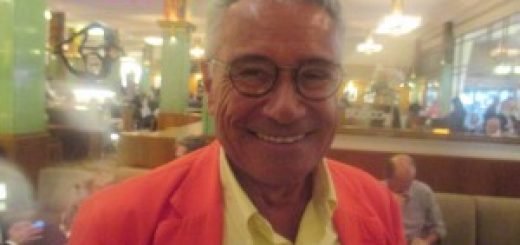J’ai le plaisir de vous informer que la Fondazione Prada présentera du 7 juin au 3 novembre 2014 à Venise, dans son siège de Ca’ Corner della Regina, l’exposition “Art or Sound”, dont le commissaire est Germano Celant. Le vernissage aura lieu du mercredi 4 au vendredi 6 juin.
Conçue comme une analyse du passé et du présent, “Art or Sound” abordera les questions du rapport entre art et son, des aspects iconiques de l’instrument musical, ainsi que du rôle de l’artiste musicien et des contextes dans lesquels les arts visuels et la musique se sont rencontrés et confondus du 17ème siècle à aujourd’hui
Fondazione Prada
“Art or Sound”
Ca’ Corner della Regina, Venice
June 7 – November 3, 2014
Preview: June 4 – 6, 2014
Venice, March 10, 2014 – The Fondazione Prada will present the exhibition “Art or Sound” at its Venetian venue of
Ca’ Corner della Regina. Curated by Germano Celant, it will run from June 7 to November 3, 2014. The preview will
be held from Wednesday June 4 to Friday June 6.
Conceived as an investigation of the past and our present, the purpose of “Art or Sound” is to analyze the
development of a productive and complex dialogue. It will consider the relationship between art and sound, iconic
aspects of the musical instrument, the role of the artist-musician, and the areas in which the visual arts and music
have come together and blurred.
The exhibition will occupy the ground floor and two main floors of Ca’ Corner della Regina. For the first time since
the Venetian palazzo was reopened to the public, the rooms on the second piano nobile will be used. This provides
1000 square meters of exhibition space that has been restored as part of the renovation of the building undertaken
in 2011 by the Fondazione Prada.
“Art or Sound” aims to emphasize the symmetrical and ambivalent link that exists between works of art and sound
objects. It will offer a reinterpretation of the musical instrument and the way it can become a sculptural-visual
entity and back again, in a continual reciprocal relationship of encroachment and inversion, a phenomenon seen
since the 17th century. The project analyzes the overlap between the production of both art and sound, music and
the visual arts, with the aim of highlighting the constant exchange between them, though eschewing unnecessary
categorization.
Organized on a historical basis, the exhibition will commence with musical instruments made from unusual and
precious materials by Michele Antonio Grandi and Giovanni Battista Cesarini in the 17th century, and musical
automata—complex artworks that combine the production of sounds with aesthetic values—created, for instance,
by the Swiss watchmaker Pierre Jaquet-Droz in the 18th century. It will continue with 19th-century examples of
automated musical instruments and mechanical devices capable of giving visual expression to music through
light and color. Research in the field of the synesthesia will be presented, along with experiments carried out by
the historical avant-gardes, such as the celebrated Intonarumori (1913) created by Futurist artist Luigi Russolo, and
some of Giacomo Balla’s objects. Also exhibited will be instruments and works by composers like Alvin Lucier and John Cage, works by art
tists of
the Sixties, such as the sound boxes of Robert Morris and Nam June Paik, kinetic sculptures made by artists like
Takis and Stephan von Huene, and sound installations like Robert Rauschenberg’s Oracle (1962-’65) and Laurie
Anderson’s Handphone Table (1978). There will also be examples of the iconic and formal appropriation of the
musical instrument, such as the pianos created by Arman, Richard Artschwager and Joseph Beuys, and hybrid
instruments like the guitars and the violins of Ken Butler and the banjos of William T. Wiley, which are genuine
sculptures that can be played. This exploration of the ambiguous overlap between art and sound will go on to
cover the more recent research of artists like Christian Marclay, Janet Cardiff, Martin Creed and Doug Aitken, and
the production of a newer generation, represented by Anri Sala, Athanasios Argianas, Haroon Mirza, Ruth Ewan
and Maywa Denki, among others.
The exhibition will be accompanied and completed by an exhaustive publication by the Fondazione Prada. Through
the essay by Germano Celant and various contributions by musicologists, visual artists, musicians, composers
and art historians, such as Jo Applin, Luciano Chessa, Christopoh Cox, Geeta Dayal, Patrick Feaster, Christoph E.
Hänggi, Bart Hopkin, Douglas Kahn, Alan Licht, Andrea Lissoni, Noel Lobley, Deirdre Loughridge, Simone Menegoi,
Holly Rogers, Jonathan Sterne, David Toop, John Tresch, Eric de Visscher and Rob Young, the book will reconstruct
the history of the relationship between art objects, sound-making devices and musical instruments, analyzing its
ambiguities, analogies and parallels.
Information on the exhibition
TITLE: “Art or Sound”

